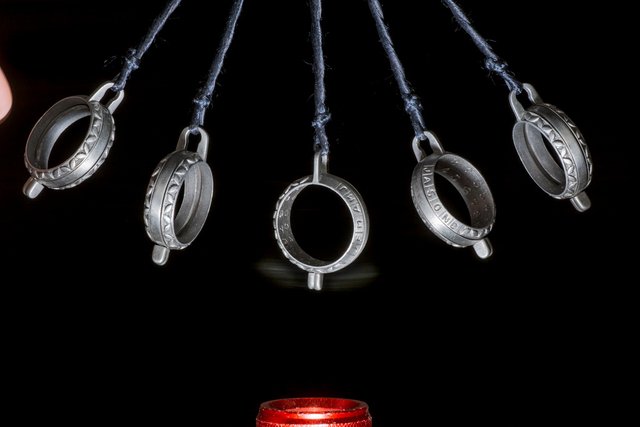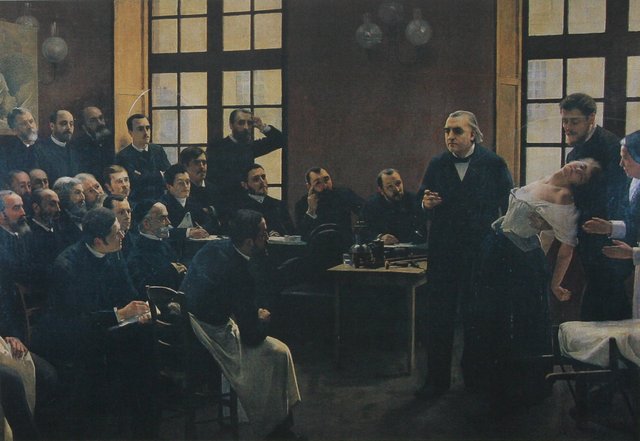Hypnosis: a matter of faith?

Hypnosis has come a long way since the days of Dr. Mesmer and "animal magnetism." Nowadays, therapists successfully apply hypnosis for anesthesia, treatment of tobacco and the consequences of psychological trauma. However, this method is still being questioned.
Hypnosis is one of the oldest methods of treatment and yet causes heated discussions. Many patients are concerned that they will lose control of themselves and will be able to force them to do things that they would never do in a normal state.
Hypnosis is accompanied by the introduction of man into a trance, which is an intermediate state between sleep and wakefulness. The person does not react to external stimuli, but is susceptible to suggestion from the hypnotist.
Over the centuries, hypnotists have been injected into the trance with the help of the method of fixation of vision, when the patient is asked to gaze at one point or on any swinging object. Then the doctor repeats the same words in a monotonous low voice. Having achieved an altered state of consciousness, the doctor makes suggestions. The patient is ordered to imagine a situation in his mind. For example, people who are prone to fear or suffering from shyness can imagine a life situation in which they feel themselves brave and self-confident. Asthmatics can imagine how easily they breathe.
Three Degrees of Hypnosis
At the beginning of the 20th century, the Swiss psychiatrist Auguste Trout singled out the 3 degrees of hypnosis: the weakest form is a sleepy, numb condition, a deeper stage when the patient is no longer able to move his foot or hand and loses sensitivity to pain. The last, the most profound phase is characterized by a state of somnambulism, similar to sleepwalking and accompanied by a complete loss of memory. Although each form of hypnosis has its curative value, doctors prefer to use the first and second phases of trance, as in these conditions patients show a greater tendency to interact with the doctor. Scientific research shows that a predisposition to hypnosis is not congenital, but at the same time, the patient should have a certain desire to participate in this procedure.

For a long time the hypnotic trance was considered as a state of relaxation. The ancient Sumerians, who inhabited Mesopotamia, had the ability to immerse the patient in a kind of therapeutic sleep, and in the ancient Egyptian texts there are references to cults, of which an integral part was immersion in trance.
Austrian physician Franz Anton Mesmer, who practiced in Vienna and Paris at the end of the 18th century, saw the origins of the therapeutic effect of trance in a certain power, which he called "strong animal magnetism". According to his teaching, the universe is immersed in an intangible substance - the fluids surrounding the bodies from all sides and penetrating into them. Each individual acts as a magnet, whose head is the north pole, and the feet - the south pole. Diseases are due to the fact that in the human body, the distribution of fluids is disturbed, and they can be treated with a light massage of the "poles" and "equator" located in the area of the lower ribs.
In a trance, but not in a dream
It seems that a person, immersed in a trance, sleeps, but this impression is deceptive. Scientific research has proved that hypnosis has nothing to do with sleep. The electroencephalogram of a person in a state of hypnotic trance shows a normal curve of brain bioelectric activity, in which alpha waves predominate, which resembles the awakening stage of a rested person.
The modern stage begins in 1843, when the English physician James Brad introduced the term "hypnosis", a derivative of the Greek word hypnos, which means sleep (Hypnos in Greek mythology is the god of sleep). At this point psychiatry and psychology appear on the scene. Representatives of these areas of medicine were more interested in the potential therapeutic effect of the trance state than in the physical principles underlying the phenomenon of hypnosis.
In France, the pioneering work of the psychiatrist Jean Martin Charcot was of great importance. He discovered the effectiveness of the hypnosis method in 1878 and used it to treat patients diagnosed with hysteria. The founder of psychoanalysis, Sigmund Freud, was engaged in hypnosis for some time, but he saw that the results obtained by Sharko were arbitrary and could not be reproduced, so he preferred to devote himself to psychoanalysis.
In the 1970s, the publication of the work of the American psychiatrist Milton Erickson marked the beginning of a new era in the use of hypnosis. Instead of a classic authoritarian method of treatment, in which the hypnotist dictates to the patient what he should do, a new approach was developed that limited the power of the doctor: now he had to exercise restraint in relation to the patient.

The moderate phase of trance is accompanied by pronounced physiological changes: slowing of breathing, decreasing heart rate, decreasing the production of stress hormones, while increasing the number of lymphocytes that are of great importance for the state of the immune system. An electroencephalogram shows that a person under hypnosis does not sleep, but is in a relaxed state of wakefulness.
Consciousness of it is partially turned inside of itself, without ceasing at the same time its other part to react to external stimuli. Until now, it remains unclear what processes in the body are triggered by concentration on the subconscious. But scientific data collected over the past 20 years prove the effectiveness of hypnotherapy in a number of diseases: impotence, tobacco smoking and allergic reactions, such as neurodermatitis.
The power of the hidden self
Hypnosis largely involves bilateral relations. In the process of hypnosis, the patient and the doctor come into close contact. Since immersion in trance is the desired state of consciousness, the first step is to focus the patient's attention. Then, through verbal instructions, the doctor calls the patient for certain images or pictures.
Hypnosis is the ideal way of deep relaxation in psychotherapy, an alternative to anesthesia in surgery and a means by which one can find out the events of the past that caused psychological trauma in patients . Only people who want to undergo hypnosis give in to treatment. Hypnosis can not force people to commit acts that are contrary to their moral values.
Anton Mesmer learned by imitating a Christian healer who traced his knowledge transferred by learning from the apostles of Christ
Sigmund Freud was not good with hypnosis he could only hypnotize one in 10 which gave him much embarrassment and he invented the psychoanalysis that so famous did him
VERY GOOD YOUR POST
Resteemed your article. This article was resteemed because you are part of the New Steemians project. You can learn more about it here: https://steemit.com/introduceyourself/@gaman/new-steemians-project-launch